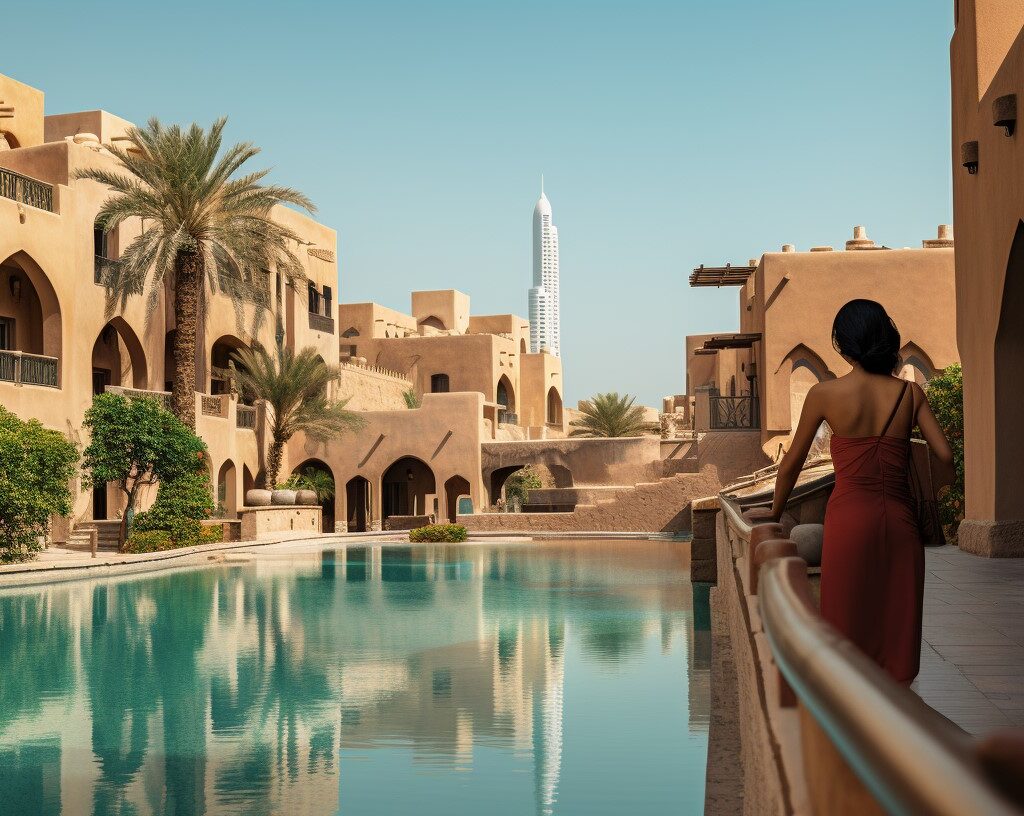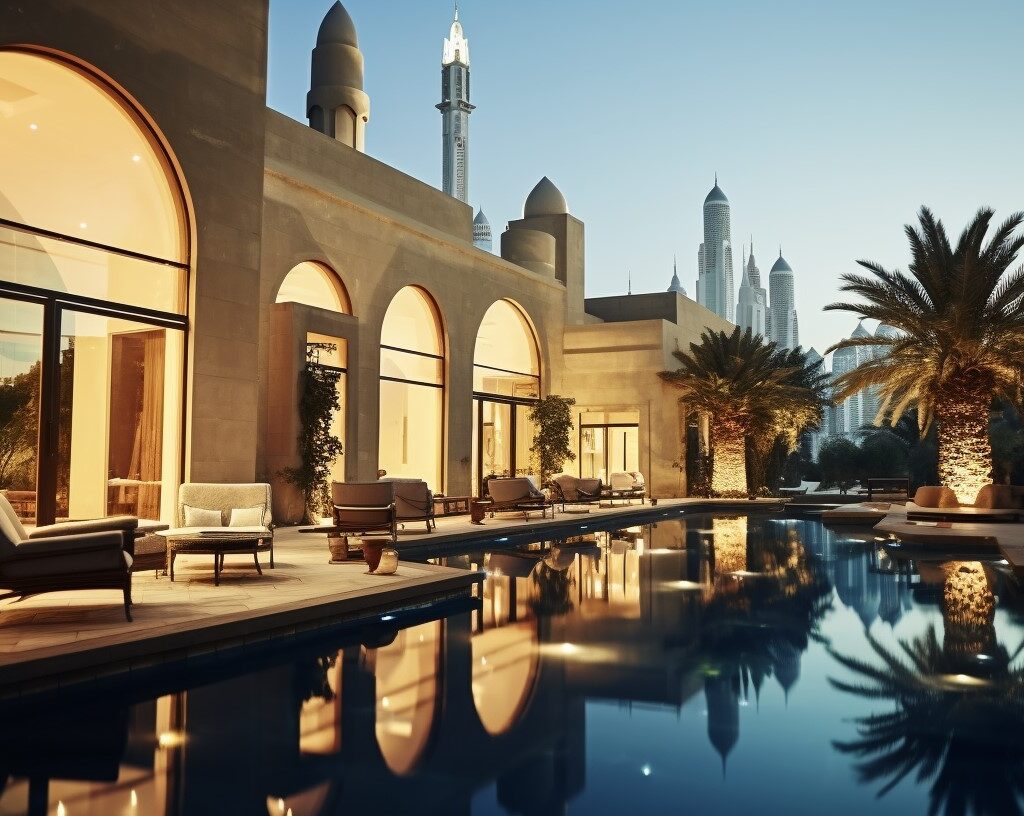In the heart of the Middle East, Dubai emerges as a glittering example of urban transformation, a city where the desert meets the sky in a symphony of architectural marvels. This bustling metropolis, once a humble fishing village, has leaped into the future with its bold foray into sustainable urban planning. As the world grapples with climate change and environmental degradation, Dubai’s journey offers hope and a blueprint for sustainable urban development.
Overview of Dubai’s Urban Landscape
Dubai’s urban landscape is a mesmerizing blend of traditional Arab culture and futuristic architecture. The city is known for its skyscrapers, including the iconic Burj Khalifa, the tallest building in the world. However, beneath this facade of modernity lies a commitment to sustainable development, driven by the necessity to adapt to the harsh desert environment and to become a global leader in innovation and sustainability.
Importance of Sustainable Development
In recent years, Dubai has recognized the importance of sustainable development. The city’s leadership understands that sustainable practices are both environmentally and economically beneficial. By investing in renewable energy, green infrastructure, and sustainable urban planning, Dubai is positioning itself as a forward-thinking city, ready to meet the challenges of the 21st century.
Historical Context of Urban Planning in Dubai
Dubai’s journey towards sustainable urban planning is a tale of transformation and foresight.
Early Development Phases
Initially, Dubai’s urban development was focused on rapid growth and modernization. The discovery of oil in the 1960s fueled a construction boom that transformed the cityscape. This phase was characterized by large-scale infrastructure projects and the development of commercial and residential properties without significant consideration for environmental sustainability.
Shift Towards Sustainability
As Dubai evolved, so did its approach to urban planning. The realization that oil resources are finite and the growing global emphasis on sustainability prompted a shift in focus. The government began integrating sustainable practices into its development plans, recognizing the need to preserve natural resources and improve the quality of life for its residents.
Critical Principles of Dubai’s Sustainable Urban Planning
Dubai’s sustainable urban planning is grounded in several fundamental principles.
Innovation and Technology Integration
Integrating innovative technologies is at the core of Dubai’s sustainable urban planning. The city has embraced intelligent technology solutions to optimize energy use, reduce waste, and improve urban mobility. Examples include AI and IoT in managing city services and infrastructure.
Environmental Conservation Strategies
Another cornerstone of Dubai’s approach is environmental conservation. Efforts are being made to protect local ecosystems, reduce carbon emissions, and promote biodiversity. This includes initiatives like extensive tree planting, conservation of natural habitats, and promoting sustainable agriculture practices.

Major Sustainable Development Projects in Dubai
Several landmark projects in Dubai highlight its commitment to sustainable development.
Case Study: The Sustainable City
The Sustainable City in Dubai is a pioneering project designed as a fully integrated green community. This development prioritizes environmental sustainability, featuring solar-powered homes, green spaces, and a car ban. It serves as a model for sustainable living, blending comfort with eco-friendliness.
Case Study: Masdar City
Another notable project is Masdar City, located near Abu Dhabi. Although not in Dubai, it’s a significant part of the UAE’s sustainability efforts. Masdar is envisioned as a zero-carbon city, relying entirely on renewable energy sources. Its design incorporates traditional Arab architectural elements to maximize natural cooling and minimize energy use.
Green Infrastructure and Energy Efficiency
Dubai’s commitment to sustainability is evident in its focus on green infrastructure and energy efficiency.
Renewable Energy Initiatives
Dubai has invested heavily in renewable energy. The Mohammed bin Rashid Al Maktoum Solar Park, for example, is one of the world’s most significant solar energy projects. This initiative is a critical step towards Dubai’s goal of sourcing a significant percentage of its energy from renewable sources by 2050.
Green Building Standards and Practices
The city has also implemented green building standards, requiring new energy- and water-efficient constructions. These standards encourage using sustainable materials, solar energy, and innovative waste management techniques, making Dubai a leader in green building practices.
In conclusion, Dubai’s journey towards sustainable urban development is a testament to its vision and commitment to a greener future. By blending innovation, environmental conservation, and sustainable practices, Dubai is transforming its urban landscape and setting a global standard for sustainable urban development.
Public Transportation and Mobility
A key aspect of Dubai’s sustainable urban development is its focus on revolutionizing public transportation and enhancing urban mobility.
Development of Eco-friendly Public Transport
Dubai has made significant strides in developing eco-friendly public transportation systems. The Dubai Metro, one of the world’s most extended driverless metro networks, is a prime example. It reduces the city’s carbon footprint by minimizing reliance on private vehicles. Additionally, introducing electric and hybrid buses and incentives for electric car ownership underscores the city’s commitment to sustainable mobility.
Pedestrian-friendly Urban Design
Dubai is also transforming its urban spaces to be more pedestrian-friendly. This includes the development of walkable neighborhoods, shaded pathways, and green corridors that encourage walking and cycling, thereby reducing reliance on motorized transport. These initiatives not only promote a healthier lifestyle but also contribute to a reduction in urban pollution.
Urban Green Spaces and Biodiversity
Another crucial component of Dubai’s sustainable urban planning is the enhancement of urban green spaces and biodiversity conservation.
Parks and Natural Reserves
Dubai is home to numerous parks and natural reserves, such as the Ras Al Khor Wildlife Sanctuary, which provides vital green spaces in the urban environment. These areas offer residents and visitors a respite from bustling city life, help maintain local biodiversity, and play a crucial role in the city’s ecological balance.
Biodiversity Conservation Efforts
The city’s biodiversity conservation efforts include protecting native species, restoring natural habitats, and implementing sustainable landscaping practices in urban areas. By prioritizing biodiversity, Dubai is preserving its natural heritage and enhancing its inhabitants’ quality of life.
Challenges and Critiques
Despite the progress, Dubai faces several challenges in its quest for sustainable urban development.
Addressing the Water Scarcity Issue
Water scarcity remains a significant challenge in this desert city. Dubai relies heavily on desalination, which is energy-intensive and has environmental impacts. The city is exploring innovative solutions like recycling wastewater and cloud seeding to address this issue.
Balancing Rapid Growth with Sustainability
Balancing rapid urban growth with sustainability is another challenge. As the city expands, maintaining a commitment to sustainable practices becomes increasingly complex. It requires continuous innovation, policy adaptation, and public awareness to ensure that growth is environmentally responsible and sustainable.

Conclusion and Future Directions
In summary, Dubai’s journey towards sustainable urban development is multifaceted, encompassing everything from green infrastructure to biodiversity conservation.
Summary of Key Points
Dubai’s transformation is marked by innovative urban planning, a shift towards renewable energy, eco-friendly transportation development, and green spaces. These initiatives demonstrate the city’s commitment to becoming a global leader in sustainability.
Prospects for Future Urban Development
Looking ahead, Dubai’s prospects for future urban development are promising. With continued investment in sustainable technologies, a focus on green living, and a commitment to environmental conservation, Dubai is well-positioned to meet the challenges of the future and serve as a model for sustainable urban development worldwide.
In this journey, Dubai is not just reshaping its destiny but also offering valuable lessons for cities around the globe. It is a testament to what can be achieved when innovation, vision, and sustainability converge to create a harmonious and sustainable urban future.
